Potřebujeme váš souhlas k využití jednotlivých dat, aby se vám mimo jiné mohly ukazovat informace týkající se vašich zájmů. Souhlas udělíte kliknutím na tlačítko „OK“.
ASTM D2132-12
Standard Test Method for Dust-and-Fog Tracking and Erosion Resistance of Electrical Insulating Materials
Automaticky přeložený název:
Standardní zkušební metoda pro Dust-and-Fog sledování a erozi odpor elektrických izolačních materiálů
NORMA vydána dne 1.1.2012
Informace o normě:
Označení normy: ASTM D2132-12
Poznámka: NEPLATNÁ
Datum vydání normy: 1.1.2012
Kód zboží: NS-19391
Počet stran: 6
Přibližná hmotnost: 18 g (0.04 liber)
Země: Americká technická norma
Kategorie: Technické normy ASTM
Kategorie - podobné normy:
Anotace textu normy ASTM D2132-12 :
Keywords:
electrical insulation, erosion resistant insulation, resistance, tracking, wet tracking, Contamination--insulation materials/applications, Dust-and-fog tracking, Electrical insulating solids, Erosion--electrical insulating materials, Fog tracking, Track resistance--electrical insulating materials, Wet tracking, ICS Number Code 29.035.01 (Insulating materials in general)
Doplňující informace
| Significance and Use | ||||||||
|
Method—It is possible that electrical insulation in service will fail as a result of tracking, erosion, or a combination of both, if exposed to high relative humidity and contamination environments. This is particularly true of organic insulations in outdoor applications where the surface of the insulation becomes contaminated by deposits of moisture and dirt, for example, coal dust or salt spray. This test method is an accelerated test that simulates extremely severe outdoor contamination. It is believed that the most severe conditions likely to be encountered in outdoor service in the United States will be relatively mild compared to the conditions specified in this test method. Test Results—Materials can be classified by this test method as tracking-resistant, tracking-affected, or tracking-susceptible. The exact test values for these categories as they apply to specific uses will be specified in the appropriate material specifications, but guideline figures are suggested in Note 4. Tracking-resistant materials, unless erosion failure occurs first, have the potential to last many hundreds of hours (Note 5). Erosion, though it is possible that it will progress laterally, generally results in a failure perpendicular to the specimen surface. Therefore, compare only specimens of the same nominal thickness for resistance to tracking-induced erosion. Estimate the extent of erosion from measurements of the depth of penetration of the erosion. Place materials that are not tracking-susceptible in three broad categorieserosion-resistant, erosion-affected, and erosion-susceptible. When the standard thickness specimen is tested, the following times to failure typify the categories (Note 6):
Note 4—Tracking-susceptible materials usually fail within 5 h. Tracking-affected materials usually fail before about 100 h. Note 5—This information is derived from the individual experiences of eight laboratories using this test method since its publication as a suggested test method in June 1957, and from the results of an organized test program among these laboratories. Note 6—In a normal distribution approximately 68 % of all test values are included within ±1 standard deviation of the mean. Interpretation of Test Results—This test method provides information that allows classification as described in 6.2. The comparison of materials within the same group is likely to be ambiguous unless three or more replicate specimens are tested. When the test method is used for specification purposes, do not establish simple minimum values without consideration of the large variance to be expected in test results. It is recommended that quality levels and specification minima be determined by statistical techniques. |
||||||||
| 1. Scope | ||||||||
|
1.1 This test method is intended to differentiate solid electrical insulating materials with respect to their resistance to the action of electric arcs produced by conduction through surface films of a specified contaminant containing moisture. Test Methods and D2303 are also useful to evaluate materials. 1.2 The values stated in inch-pound units are the standard, except in cases where SI units are more appropriate. The values in parentheses are for information only. 1.3 This standard does not purport to address all of the safety concerns, if any, associated with its use. It is the responsibility of the user of this standard to establish appropriate safety and health practices and determine the applicability of regulatory limitations prior to use. Specific precautionary statements are given in 12.4. Note 1—There is no equivalent ISO standard. |
||||||||
| 2. Referenced Documents | ||||||||
|
Podobné normy:
Historická
15.5.2014
Historická
1.2.2013
Historická
1.3.2010
Historická
1.4.2014
Historická
15.1.2010
Historická
1.9.2013
Doporučujeme:
Aktualizace zákonů
Chcete mít jistotu o platnosti užívaných předpisů?
Nabízíme Vám řešení, abyste mohli používat stále platné (aktuální) legislativní předpisy.
Chcete vědět více informací? Podívejte se na tuto stránku.


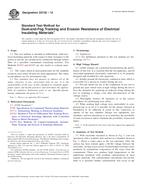
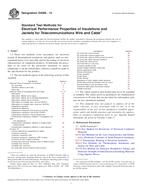 ASTM D4566-14
ASTM D4566-14 ASTM D470-13
ASTM D470-13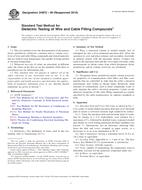 ASTM D4872-99(2010)..
ASTM D4872-99(2010)..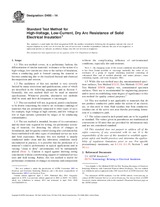 ASTM D495-14
ASTM D495-14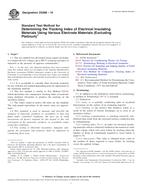 ASTM D5288-10
ASTM D5288-10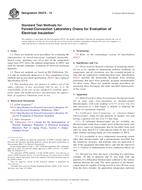 ASTM D5374-13
ASTM D5374-13
 Cookies
Cookies
